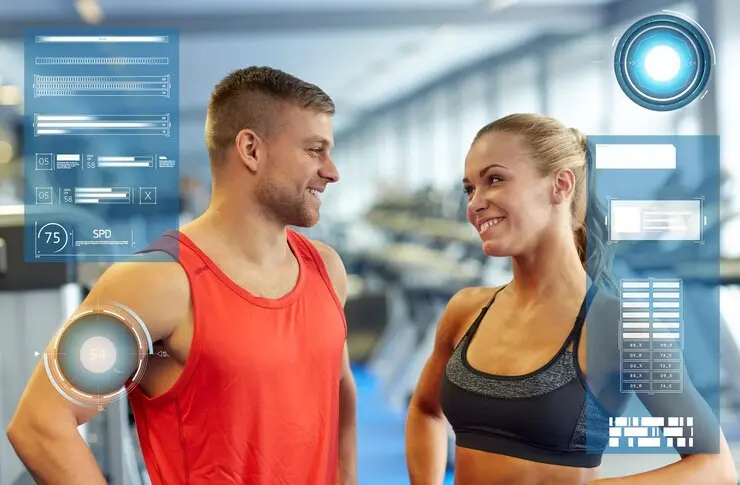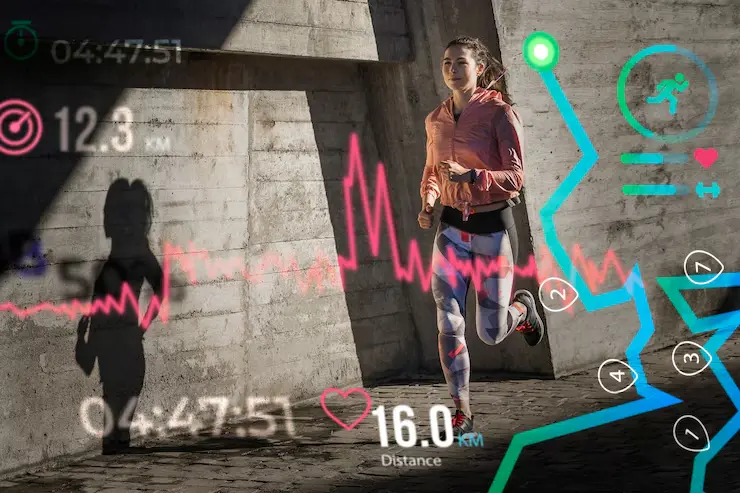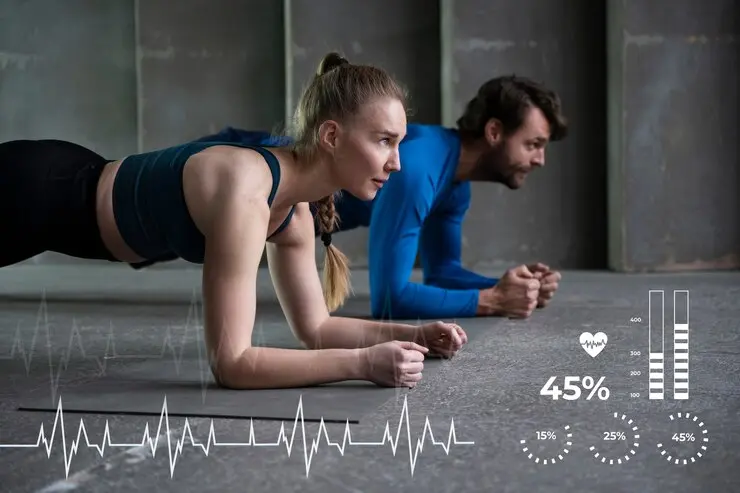Fitness plays a crucial role in our overall well-being. However, not all fitness is the same. There are different types of fitness with specific purposes and benefits. This article will explore the main differences between health-related fitness and performance-related fitness. We will also look at how health-related fitness and skill-related fitness differ. Understanding these differences helps individuals set clear goals and choose the right fitness activities. By the end of this article, you’ll have a better grasp of these fitness concepts and how they apply to your life.
Understanding Health-related Fitness
Health-related fitness focuses on overall well-being. It aims to improve and maintain health. This type of fitness includes activities that enhance the body’s ability to function efficiently in daily life. It is composed of five main components:

Components of Health-related Fitness
- Cardiorespiratory Endurance: This measures how well your heart, lungs, and muscles work together. Activities like walking, running, and swimming can improve this component.
- Muscular Strength: This is the amount of force a muscle can produce. Strength training exercises like lifting weights help build muscular strength.
- Muscular Endurance: This refers to how long a muscle can sustain activity. Activities like cycling or doing multiple repetitions of an exercise improve endurance.
- Flexibility: This is the range of motion around a joint. Stretching exercises help improve flexibility.
- Body Composition: This is the ratio of fat to lean tissue in your body. Healthy eating and regular exercise help maintain a good body composition.
Understanding Performance-related Fitness
Performance-related fitness is aimed at enhancing one’s ability to perform specific physical tasks. It is often associated with athletes and sports. This type of fitness includes skills and abilities that improve performance in various activities. There are six main components:
Components of Performance-related Fitness
- Agility: The ability to move quickly and change direction with ease. Sports like basketball and soccer require high agility.
- Balance: The ability to maintain stability while moving or staying still. Gymnastics and surfing are examples of activities that require good balance.
- Coordination: The ability to use different parts of the body together smoothly. Activities like juggling or playing the piano improve coordination.
- Power: The ability to exert maximum force quickly. Weightlifting and sprinting are examples of activities that require power.
- Reaction Time: The time it takes to respond to a stimulus. Quick reaction time is crucial in sports like boxing and tennis.
- Speed: The ability to move quickly. Running and swimming competitions measure speed.
Key Differences Between Health-related and Performance-related Fitness

Goals and Objectives
The primary goal of health-related fitness is to enhance overall health and wellness. It focuses on preventing diseases and improving the quality of life. Performance-related fitness, on the other hand, aims to improve physical performance in specific activities or sports.
Training and Activities
Health-related fitness involves a balanced approach, combining cardiovascular, strength, flexibility, and endurance exercises. Examples include brisk walking, yoga, and light weightlifting. Performance-related fitness involves specialized training tailored to the demands of a particular sport or activity. This might include plyometric exercises, agility drills, and sport-specific practices.
Measurement and Evaluation
Health-related fitness is typically measured through general health indicators such as body mass index (BMI), blood pressure, and cholesterol levels. Performance-related fitness is measured through specific performance tests like the 40-yard dash for speed, vertical jump for power, and agility tests.
How Health-related Fitness and Skill-related Fitness Differ
Health-related fitness and skill-related fitness are often confused, but they serve different purposes.
Focus and Purpose
Health-related fitness focuses on improving overall health and the ability to perform daily tasks. Skill-related fitness focuses on improving specific skills required for sports or physical activities.
Components and Training
Health-related fitness includes cardiovascular endurance, muscular strength, muscular endurance, flexibility, and body composition. Skill-related fitness includes agility, balance, coordination, power, reaction time, and speed. Training for health-related fitness is more about general well-being, while training for skill-related fitness is more specific and intensive.
How Do Health-related Physical Fitness and Skill-related Physical Fitness Differ?
Approach to Exercise
Health-related physical fitness emphasizes activities that anyone can do to stay healthy. This might include activities like walking, swimming, or cycling. Skill-related physical fitness involves activities that are more specialized and often require professional training. These activities are aimed at improving performance in specific sports or physical tasks.
Accessibility and Participation
Health-related fitness activities are accessible to people of all ages and fitness levels. They are designed to improve general health and can be done without special equipment. Skill-related fitness activities are often more complex and may require specific training or coaching. They are usually geared towards athletes or individuals looking to enhance their performance in particular areas.
Practical Examples
Health-related Fitness Examples
- Walking: A simple activity that improves cardiovascular health.
- Yoga: Enhances flexibility and reduces stress.
- Light Weightlifting: Builds muscular strength and endurance.
Performance-related Fitness Examples
- Sprinting: Improves speed and reaction time.
- Agility Drills: Enhances quick directional changes for sports like basketball.
- Powerlifting: Builds maximum strength and power.
Skill-related Fitness Examples
- Balance Training: Activities like standing on one leg improve balance, crucial for gymnastics.
- Coordination Exercises: Juggling or hand-eye coordination drills improve coordination.
- Reaction Time Drills: Practicing quick responses for sports like tennis.
Benefits of Health-related Fitness
Physical Health
Health-related fitness improves cardiovascular health, strengthens muscles, and enhances flexibility. It helps maintain a healthy weight and reduces the risk of chronic diseases such as heart disease, diabetes, and obesity.
Mental Health
Regular physical activity boosts mood, reduces anxiety, and improves sleep. It can also enhance cognitive function and reduce the risk of depression.
Longevity
Engaging in health-related fitness activities contributes to a longer, healthier life. It improves overall quality of life and functional capacity, allowing individuals to perform daily tasks with ease.
Benefits of Performance-related Fitness

Enhanced Athletic Performance
Performance-related fitness improves specific skills needed for sports and physical activities. It helps athletes perform at their best and achieve their goals.
Injury Prevention
Proper training in performance-related fitness helps prevent injuries by improving strength, flexibility, and coordination. It ensures that the body can handle the demands of specific activities.
Personal Achievement
Achieving performance-related fitness goals provides a sense of accomplishment and boosts confidence. It motivates individuals to push their limits and strive for excellence.
Conclusion
Understanding the differences between health-related fitness and performance-related fitness is essential for setting clear fitness goals. Health-related fitness focuses on overall well-being and the ability to perform daily activities. Performance-related fitness aims to enhance specific physical skills for sports and activities. Both types of fitness are important and offer unique benefits. By knowing your goals and choosing the right type of fitness, you can improve your health and achieve your performance objectives.


I just could not leave your web site before suggesting that I really enjoyed the standard information a person supply to your visitors Is gonna be again steadily in order to check up on new posts
Your passion for your subject matter shines through in every post. It’s clear that you genuinely care about sharing knowledge and making a positive impact on your readers. Kudos to you!
I have been surfing online more than 3 hours today yet I never found any interesting article like yours It is pretty worth enough for me In my opinion if all web owners and bloggers made good content as you did the web will be much more useful than ever before
I have read some excellent stuff here Definitely value bookmarking for revisiting I wonder how much effort you put to make the sort of excellent informative website